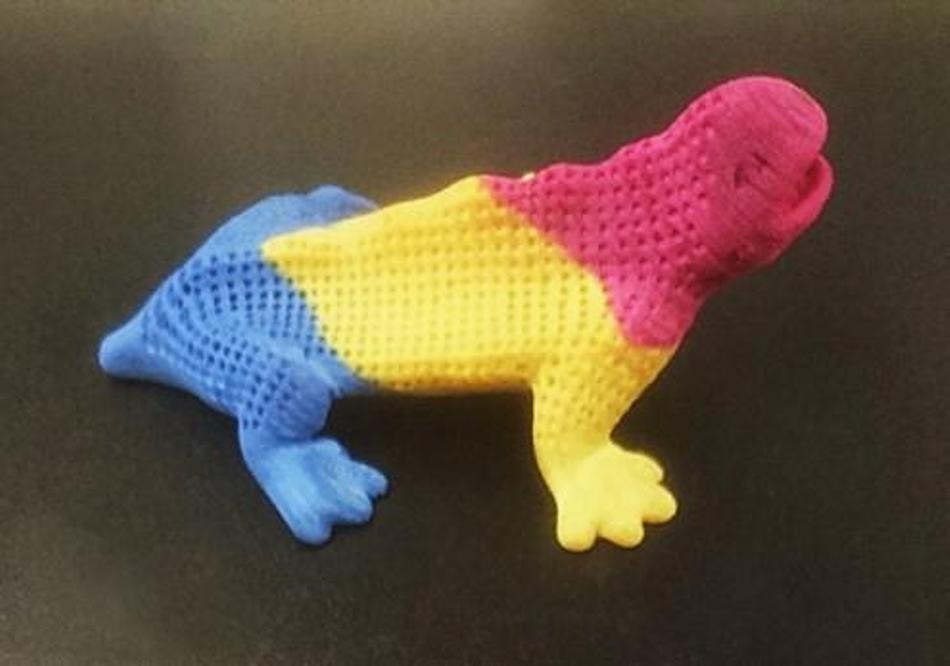Aug 3 2018
People are looking into the use of 3D printing for a broad array of applications, such as medical devices, manufacturing, fashion, and even food. However, one of the most effective forms of 3D printing is hampered by an important drawback: It has the ability to print objects that are only black or gray in color.
 This brightly colored dragon was produced by 3D printing, using gold nanorods as photosensitizers. (Image credit: American Chemical Society)
This brightly colored dragon was produced by 3D printing, using gold nanorods as photosensitizers. (Image credit: American Chemical Society)
At present, scientists have fine-tuned the technique so that it can print in all of the colors of the rainbow. The results of their study have been published in the ACS journal Nano Letters.
Selective laser sintering (SLS) printers use a laser to heat particular regions of a powdered material, typically polyamide or nylon, such that the powder sinters or melts to form a solid mass. Then, the printer performs selective, layer-by-layer sintering of new powdered material until achieving the desired 3D structure. The researchers reduced the energy requirements of the process by adding compounds known as photosensitizers to the polymer powders.
These materials (for example, carbon black, carbon nanotubes, and graphene) absorb light considerably stronger compared to the polymers and transfer heat to them, thereby facilitating the use of low-cost, lower power lasers. Yet, the carbon-based photosensitizers have the ability to produce printed objects that are only black or gray. Gerasimos Konstantatos, Romain Quidant, and their colleagues from The Institute of Photonic Sciences (IFCO) strived to develop a photosensitizer that would facilitate color printing using the SLS technique.
The scientists designed gold nanorods to strongly absorb in the near-infrared region of the spectrum while being nearly transparent to visible light. They coated the nanorods with silica and mixed them with polyamide powders to print the 3D objects. They discovered that the ability of the gold nanorods to convert light from the laser to heat was considerably better compared to carbon black, the industry standard. Moreover, the new photosensitizers had the potential to synthesize considerably whiter and—when mixed with dyes—brightly colored 3D objects. Significantly, the materials are cost-efficient for large-scale production. The scientists have filed various patent applications in relation to the new technology.
Funding from the European Research Council, Fundació Privada Cellex, the Research Centers of Catalonia (CERCA), and the Severo Ochoa program of the Spanish Ministry of Economy and Business is acknowledged by the authors.